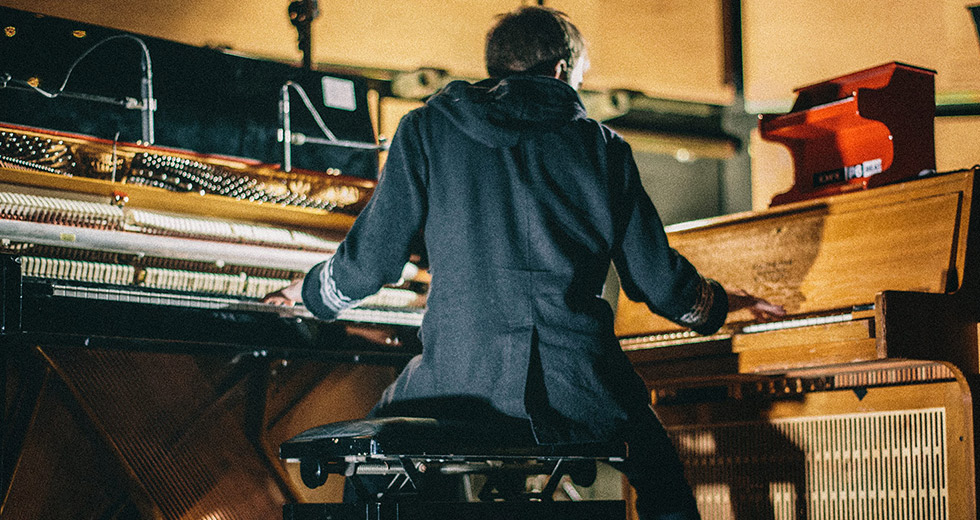A Guide to New Classical
From piano lullabies to the subtle infusion of woodwinds, here are ten artists that have made classical music and instrumentation a big part of their music.
KIASMOS
Made up of Olafur Arnalds and Bloodgroup’s Janus Rasmussen, Kiasmos produces the kind of balanced minimal-meets-atmospheric-meets-classical that sounds like a symphonic thunderstorm – dark and brooding, yet beautiful. Created in Arnalds’ studio in Iceland, the record features a string quartet, a live drummer, and Arnalds on the grand piano.
NILS FRAHM
A German artist who is consistently setting the bar in contemporary classical, Nils Frahm has garnered a massive following over the past few years. Tracks like “Says,” “Said and Done,” and “Hammers” swell, while others creep along more subtly, but his compositions always comes with huge emotion – a rarity in electronic music.
LUDOVICO EINAUDI
A classically trained composer and musician, Ludovico Einaudi is best known for scores to films like The Intouchables and I’m Still Here, as well as solo releases like 2009’s Nightbook, which balanced synthwork with piano composition. While his recent In A Time Lapse was a combination of orchestral movements and piano solos, the album boasted stunning dancefloor-centric remixes from producers like Starkey and Phaeleh.
GIDGE
Influenced by their Nordic homeland, Gidge’s soundscapes pull in subtle piano references that are more contemplative than active. Their melodies are at times melancholic, fueled by zephyrs of atmosphere, but it is their keen infusion of rustic percussion, woodwinds and textural instrumentation that makes them stand out.
BONOBO
Ever since 2010’s Black Sands, Bonobo has been proving that electronic music can be effectively organic, working with wind chimes, drums, guitar, flute, strings, and the sitar, resulting in a brand of tripped out, textural downtempo that is one of the most distinct sounds in modern electronic music.
CHRISTIAN LOFFLER
Utilizing self-composed piano melodies, strings, and traditional instruments like the tintinnabuli, Christian Loffler weaves long, drawn-out narratives that build slowly but surely. The result is a set of deeply emotive pieces that translate just as well on headphones in your bedroom as they do on the dancefloor.
MAX COOPER
While Max Cooper’s DJ sets focus on club-centric beats infused with noise, ambience, glitch, his productions are decidedly more introspective. His latest, Humans, balances elements of IDM, modern classical, and deep techno – snippets of piano composition sidle up confidently to Cooper’s astute techno, washes of white noise, and ethereal, gospel-like vocals from Kathrin deBoer.
LUBOMYR MELNYK
The Ukrainian pianist and composer Lubomyr Melnyk is considered one of the fastest pianists in the world, sustaining speeds of up to 19.5 notes per second. He calls his playing the “continuous mode,” which emphasizes the rapid succession of notes in pieces that often last more than a half hour. His lightning pace and use of a pedal to overlap and blend is a perfect nod to contemporary mixing.
BRANDT BRAUER FRICK
Brandt Brauer Frick work backwards; they are classical musicians making electronic music. Making “techno without the technology,” as they call it, BBF use drums, piano, violin, harp, trombone, and even a xylophone in intricate and playful ways. The group’s multi-layered albums have a certain spontaneity that carries through to their live performances as well.
MAX RICHTER
Max Richter is likely the most important artist on this list; the composer helped to popularize this strain of music, and is consistently innovating within the genre. Having collaborated with electronic artists such as Future Sound of London, and played out his own versions of pieces by Brian Eno and Philip Glass, Richter even took recomposed Vivaldi’s iconic “Four Seasons” in 2012.

